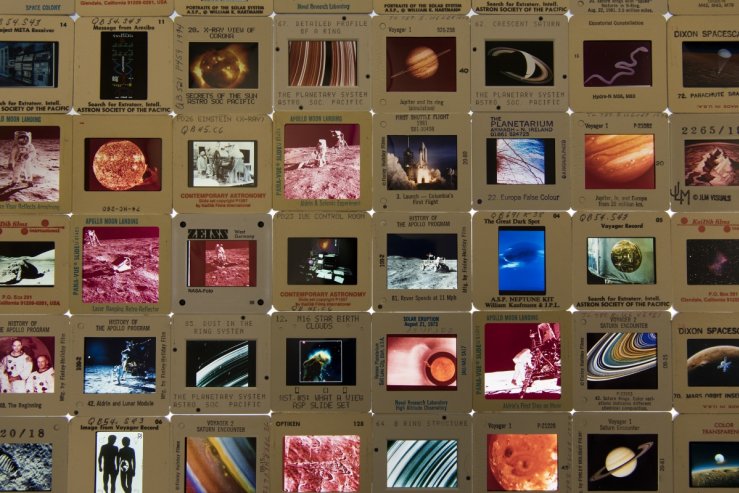Holly Schmidt
Lost Lessons, 2017 - ongoing

© Holly Schmidt
Holly Schmidt
Lost Lessons, 2017 - ongoing
Photo Credit: Denis Gutiérrez-Ogrinc
20 x 30 cm
Edition: 50
200€ incl. VAT.
>> Order >>
>> Already in the 1840s, there were first attempts to photographically depict space. Early on, scientific astronomy recognized the usefulness of the photographic image as evidence as well as a research object. And they understood how to stage space travel as a spectacular and public-effective media event. Finally, the images also served to legitimise the financing of space travel in the eyes of the public. Today the American space agency Nasa is one of the largest existing image factories. Between 1962 and 1972 alone, more than 30,000 images were taken during the Apollo missions, and there are now over a million photographs.
In her work "Lost Lessons," the Canadian artist Holly Schmidt devotes herself to such motifs as well as to the special image carrier on which they circulate. The starting point of her preoccupation with space are slides produced especially for teaching and lecturing purposes, which she has been taking from the collection of her father, an emeritus professor of astronomy, since 2014. Originating from a period from 1970 to 1990, the collection covers a wide range of formats and materials, from photographs and illustrations to diagrams and formulas, and thus represents a wide range of information about space.
In private slide shows, which her father organized at home when she was a child, she experienced the viewing of space in the dark room, in which the humming and rotating of the projector could be heard, as an atmospherically condensed, immersive experience. Not yet able to grasp the scientific information, the projected slides opened up a vast, magical world. "There was something incomprehensible about them," Schmidt writes, noting that between the vastness of space and time and the ephemeral historical document of the slides, a dissonance arises that is fascinating and creates a void that she wants to use as a space for imagination and reflection. << Excerpt from: Helena Weber "Images through Space and Time" in: L.Fritz No. 6